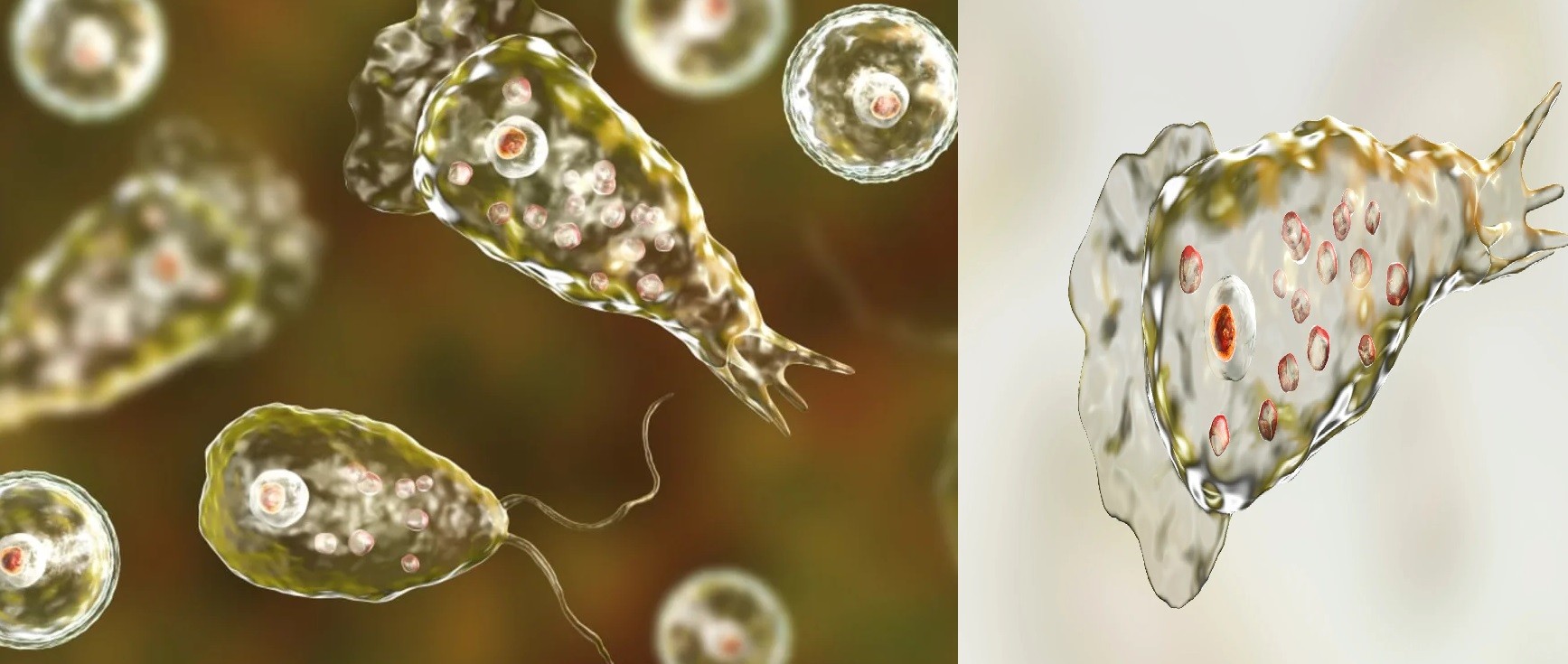In tragic news tragically, an Ohio teenager was killed after being struck by a brain-eating fungus during an excursion to an North Carolina water park. Lauren Seitz, 18, went to the U.S. National Whitewater Center in Charlotte with her church’s youth group on the 8th of June. She passed away on June 19 from primary amoebic meningoencephalitis (PAM) it is an uncommon disease of the brain that is caused from Amoeba Naegleria fowleri.Naegleria fowleri : 5 (Q&A) I got water up my nose brain-eating Amoeba
PAM can occur in the event that Naegleria fowleri is carried up one’s nose before reaching the brain. There, it usually creates an infection of brain’s lining (meningitis) as well as inflammation in the cerebral cortex (encephalitis) as per the Centers for Disease Control and Prevention. The symptoms, which begin between one and nine days after an individual is diagnosed with the infection generally include intense headaches, fever and stiff necks. The illness can be fatal.
Pages of Contents
Naegleria fowleri, Home Primary Care 5 things you must be aware of about brain-eating Amoeba
Recently, a child from Douglas County died from a rare illness caused by the Naegleria fowleri amoeba. It was contracted during a swim within the Elkhorn River. The Centers for Disease Control and Prevention has confirmed that it was Naegleria fowleri. This is the organism that causes the brain-related infection known as primary meningoencephalitis amebic.
What is a brain-eating amyosiasis?
The amoeba that is free-living, Naegleria fowleri (a simple single-celled organism) can be found in warm fresh water as well as in soil. Exposed through the nose may cause the rare, but fatal condition known as primary amoebic encephalitis. It is an irreparable inflammation within the skull and the lining of the skull (the “meninges”). While the prevalence is relatively minimal, with less than 200 cases in during the 60s, in United States, the death rate of Naegleria fowleri is higher than 97% due to the fact that the amoeba has a high resistance to the current treatments and modern treatments.
Many people, understandably, have concerns about how secure it is to be in freshwater sources, such as streams, lakes, rivers and rivers. Here are five important things to remember regarding this disease and your security.
1. Keep the possibility of getting sick in the context of
“We have discovered that this amoeba exists present in many freshwater sources as well as soil samples. This doesn’t mean that you should be concerned,” says Mark Rupp, MD, Nebraska Medicine specialist in infectious diseases.
“This infection is not common when compared with other risks associated with activity within and outside of the water. In the statistics, less than thirty cases were reported within the last 10 years. When deciding on what leisure activities to take part in, make sure to take the appropriate precautions while keeping the risks in the context of.”
2. Make sure you are taking precautions to minimize risk
Freshwater temperatures rise in the latter summer months, which increases the growth of bacteria and algae. Amoebas normally present in the mud, feed on this bacteria.
The single-cell organism is infected by people when the water that contains amoeba is absorbed through the nose, and then into the olfactory region, typically during swimming, jumping or diving into rivers or lakes.
The prevention of freshwater from being able to enter your nose can be the ideal way to minimize the chance of contracting an infection. Even though the likelihood of getting infected are not high, you can take these steps to minimize the risk of infection:
Keep your head up and stay clear of submerging
Do not let water enter your nose. Use clips or a nose plug instead.
If you swim, be careful not to jump into the water.
Do not disturb or dig at to the surface of the lake or the river.
Beware of high-speed water sports like tubing or water skiing.
3. What is the Naegleria fowleri infection can be prevented? transmitted
What we do know is that the illness cannot be transmitted from person to person or be infected by drinking unclean water.
4. Naegleria fowleri symptoms following exposure to freshwater
Symptoms can last anywhere from one to twelve days, with the typical symptoms appearing after five days. If you notice signs following exposure, be sure for signs that they’re progressing and seek medical attention in the event that they continue.
The symptoms that first appear, which are generalized, are:
- Headache
- Nausea or vomiting
- Fever
- The symptoms that are most likely to progress may include:
- Stiff neck
- Confusion
- Seizures
- Other neurological signs
5. Treatment and diagnosis for Naegleria fowleri infection. Naegleria fowleri infection
This kind of infection is extremely serious and death is reported in 97 percent of cases. The diagnosis requires a test to determine the amoeba that is found in brain tissue in the spinal fluid of the brain.
A limited number of instances of patients who have been able to survive with the intervention of an early time have been recorded. Miltefosine is believed to have an effect when used in conjunction with other medications (antifungal or antibacterial drugs). Nebraska Medicine has access to this kind of treatment.



